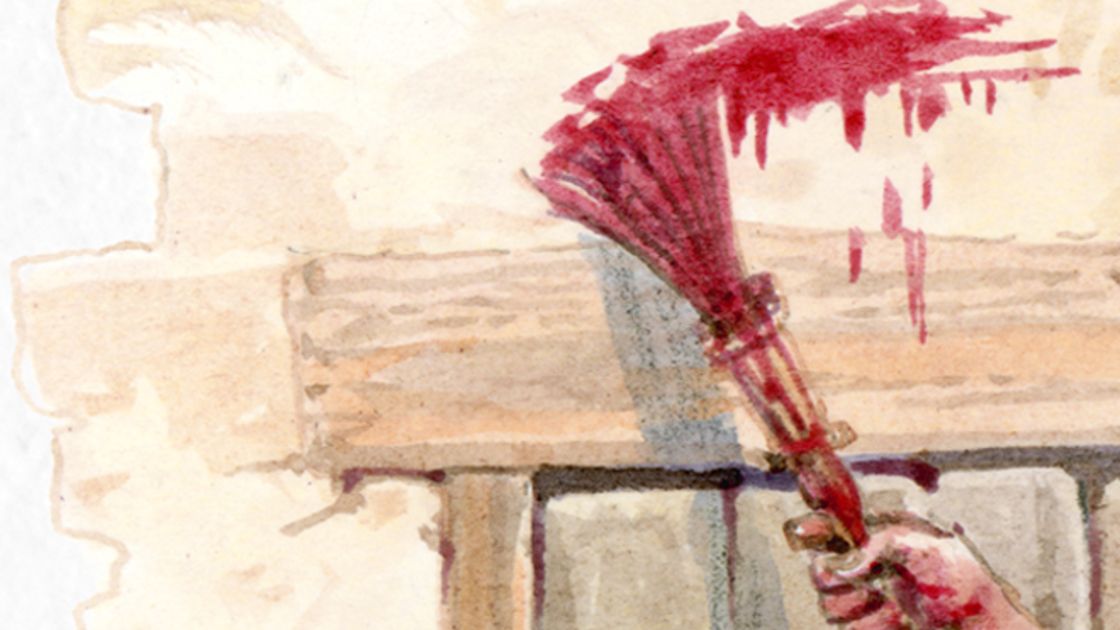By Jeffrey Garcia
To celebrate the Feast of Unleavened Bread (Passover), the Feast of Weeks (Shavuot), and the Feast of Booths (Sukkot), many Jews traveled to the Jerusalem Temple during the first century C.E. This was sometimes a long journey. Even for those living in Galilee, it could take up to a week. The central—and shortest—route goes through Samaria. Pilgrims would have passed the cities of Sepphoris, Nazareth, Tirzah, Shechem, Shiloh, and Bethel. Although this route would have taken only three days by foot, many Jews chose to avoid it. They preferred longer routes that were historically safer. The Jewish historian Josephus records a violent quarrel between some Galilean Jews and Samaritans, while the Galileans were traveling through Samaria (Antiquities). Passing through this volatile region carried real risks. Yet, García observes that sometimes Jesus and his disciples did indeed travel this path (John 4).

Apart from the Jewish historian Josephus’s reports about pilgrims crossing the Jordan River, coming from Jericho, and traveling through Samaria (Antiquities 17.254; 20.118), information about particular routes in the Land of Israel is slim. Narratives about these travelers before the destruction of Jerusalem’s Temple are altogether missing. Still, there is little doubt that many practiced pilgrimage on the three holy days—even if, for some, it was a once-in-a-lifetime journey. Historical and archaeological evidence indicates a vibrant practice of pilgrimage beginning in the Hellenistic period (by the second century B.C.E.). Both Josephus and the Jewish philosopher Philo of Alexandria describe the myriads of Jews in the land and the diaspora who made pilgrimage (Antiquities 20.118–119; Special Laws 1.69, respectively). Josephus comments that pilgrimage was intended to “render thanks to God for benefits received, to intercede for future mercies, and to promote by thus meeting and feasting together feelings of mutual affection” (Antiquities 4.203). Additionally, the Theodotus Synagogue Inscription, the so-called Pilgrimage Road (a monumental staircase and street that led from the Siloam Pool to the Temple), and several freshwater pools reveal aspects of Jerusalem’s infrastructure that were used by pilgrims.
According to the Gospels, Jesus participated in more than one pilgrimage. At the age of 12, he accompanied Mary and Joseph to Jerusalem for Passover, a practice that Luke describes as happening “every year” (Greek: κατ’ ἒτος; Luke 2:41-52). His best-known pilgrimage in the Gospels, although it is not often noted as such, is his final journey to Jerusalem. Sometimes obscured by its tragic end, Jesus’s travel to Jerusalem was intended to celebrate and eat the Passover meal with his disciples (Luke 22:15). Beginning in Luke 17:11, the first geographical detail describes Jesus as traveling through an indistinct area “between Samaria and Galilee.” While the precise location is unknown, Jesus’s route with his disciples probably began in Capernaum (see Mark 9:33). If so, their route would have led south along the northwestern shore of the Sea of Galilee, cutting west through the Arbel Pass not far from Magdala and intentionally avoiding Tiberias. The pass provided the quickest access to Nazareth in the west and the Jezreel Valley in the south. An earlier reference in Luke 7:11 to Jesus at Nain suggests that on occasion he continued south from Arbel into the Yavne’el Valley and used a local road that emptied in the Harod Valley. This road met with biblical Endor (Joshua 17:11; 1 Samuel 28:7) continuing south on the eastern side of the Hill of Moreh. Finally reaching the Harod Valley, a more significant road moved east to Beth Shean (Scythopolis). This eastern pass from the Jezreel Valley to Beth Shean could be described as “between Samaria and the Galilee.” Near Beth Shean, the route crossed the Jordan River, probably not far from where modern travelers enter the country of Jordan through the Beth Shean/Sheikh Hussein crossing. Passing southeast into Transjordan, the pilgrims could reach the city of Pella in the region of Perea, which in Jesus’s day was administrated by Herod Antipas. Because conditions along the western side of the Jordan River were unfavorable for travelers, this circuitous route was necessary.
Jewish communities in Perea would have welcomed pilgrims on their way to Jerusalem. Despite being the longer route to Jerusalem (taking five to seven days by foot, shown in red on the map), it avoided the region of Samaria where violence had occasionally flared while Galileans were on pilgrimage (e.g., Antiquities 20.118). Jesus’s stop in Jericho (Matthew 20:29; Mark 10:46; Luke 18:35; Luke 19:1) strengthens our suggestion that Jesus traveled through Perea on his way to Jerusalem. There would have been no other reason for him to pass through the biblical city. It stood west of a ford in the Jordan River and today is called Qasr al-Yahud (western bank), Arabic for “Fort of the Jews,” and alternatively Al-Maghtas (eastern bank), meaning “immersion” or “baptism” in Arabic. Since at least the fourth century C.E., this area has been identified as the traditional location of Jesus’s baptism. Departing Jericho, travelers would have entered Wadi Qilt and the difficult, biblical Ascent of Adumim (Joshua 15:7). Jesus and his disciples followed the southern side of this ascent to Bethpage, Bethany, and finally Jerusalem. The dangers along this route, which the Roman general Pompey wanted to quell (Strabo, Geography 16.40), were the inspiration for the story of the Good Samaritan (Luke 10:25-37). Pilgrimage might be indicated elsewhere in the Gospels. Before meeting the Samaritan woman at the well, Jesus is said to depart Judea to return to Galilee (John 4:3). There is little doubt that Galileans had a close cultural and religious connection with Judea and Jerusalem. John, of course, does not explicitly state that Jesus is on pilgrimage; in fact, Jesus appears to travel to Jerusalem for different reasons (e.g., John 10:22).
However, there are several motifs that arise in conversation between Jesus and the Samaritan woman that resemble later midrashic texts (e.g., Sifre Deuteronomy 48) and may hint at pilgrimage. In particular, the drawing and giving of water and worship at the Temple in Jerusalem (John 4:7-15, John 4:19-22) are not unlike traditions surrounding Sukkot and Shavuot. Regarding Sukkot, daily water libations were performed in the Temple. During Shavuot, the giving of the Torah—both written and oral—is celebrated. In Second Temple traditions, the giving of Torah (Law) is sometimes associated with water from a well (Damascus Document 6.2–11). Although it is unclear whether this story originates in the context of pilgrimage, it demonstrates that Jesus and his disciples traveled along the shortest route from Galilee to Jerusalem (taking three days by foot, shown in white on the map), which is sometimes called the “Way of the Patriarchs.” This ridge route followed the watershed line of the central hill country.
In Luke, a third route may be implied. Toward the end of the Gospel, two men heading from Jerusalem to Emmaus after the crucifixion meet a stranger who is later revealed to be the risen Jesus (Luke 24:13-35). Their departure from Jerusalem was also during the Passover. It is unclear whether Emmaus is their final stop. Jesus is described as desiring to continue on (Luke 24:28). A road led west from Jerusalem to Emmaus and eventually connected with a route that made its way north, along the coastal plain (shown in green on the map). Later Christian pilgrims, such as the sixth-century pilgrim Theodotian, also used the Samaritan and coastal plain route (heading east through Emmaus) to reach the holy city. The reason for this was that pilgrimage routes formed major north-south roads also used by travelers, merchants, and armies alike. The Gospels, however, present invaluable evidence that these routes took on additional significance during the days of pilgrimage. They carried both spiritual and economic weight. The flow of pilgrims three times a year demonstrated a continued piety to the God of Israel and increased economic life for the villages (and Jerusalem) that supplied their needs.




